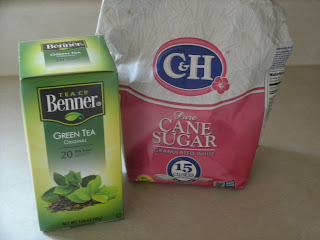Ecuador
Today we travel to Ecuador with a beautiful, red tea. Ecuador sits on the Pacific Ocean between Peru and Colombia. They have a long history with science, and the country is described as being one of the most environmentally diverse in the world. Some of the notable science/scientists who worked there were Charles-Marie de La Condamine (first scientific expedition to measure the circumference of the Earth), Alexander von Humboldt, and Charles Darwin also worked there studying geography, ecology, and evolutionary biology. I was also surprised, but not surprised, to learn that the country was named for the Equator, which runs through the top portion of the country. The land was also part of the Inca empire in pre-Columbian times. Notably, the Galapagos Islands are part of their territory.
I thought it was funny that were a major exporter of Panama hats in the mid 18th century to people looking for gold, and the early 19th century for the builders of the Panama canal. Those Panama hats were not native to the country they were named for! Now they are a major exporter of petroleum, along with cacao, bananas, and flowers. They also depend on tourism for income. The land varies from mountains, to volcanoes, to sea level beaches and islands. A portion of the Andes mountain range runs through this country, so like east Africa, there are snow capped mountains by the equator.
In the 1960s, land started to be shared more equitably among the farmers, thus ending the dependent relationship of farm workers to the larger land owners in the area. High elevations are used for pastruing sheep, while lower elevations are used for crops. About 64% of the population lives in urban areas now with the two major cities being Guayaquil (the largest city on a major port), and Quito (a government and tourist center). It is a young country with over half of the population under 30 years old.
Agriculture has traditionally been a large employer in the area. Rural families feed their families with the produce of their farms, and commercial grain production has not become popular thanks to cheap grain imports from the US. There is a lot of livestock production there as marginal lands can be used for grazing. Tropical specialty crops are exported for profit instead. I found that tea was mentioned in what they grow there, but it is mostly for local consumption. When looking for info about tea in Ecuador on YouTube, I found hibiscus tea. The instructions said to simmer for 15 minutes. I didn't feel like watching a simmering pan that day, so I decided to bring the water to a boil, and let steep for 15 minutes instead.
This was the color about a minute into steeping (I was using 2 cups of water, and 1 tablespoon of hibiscus flowers).
This was the color 15 minutes later. I strained it into a "recycled" bottle, and put it in the fridge.
I ended up with a strong brew. This might benefit from using less hibiscus in the future. It had a very bright, strong flavor, with a slightly woody undertone. I'm wondering if using fewer leaves would get rid of the woody profile. Anyway, may the people of Ecuador enjoy their local tea no matter what type they drink.






It looks like cranberry juice.
ReplyDeleteYou're right, it does. But it doesn't taste the same.
Delete